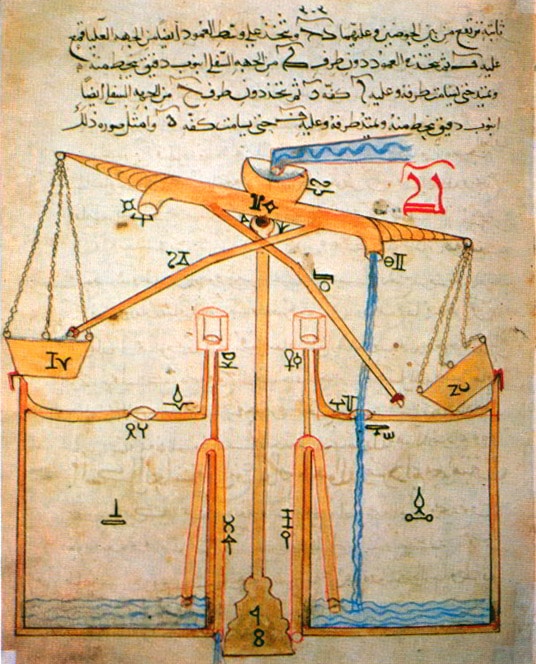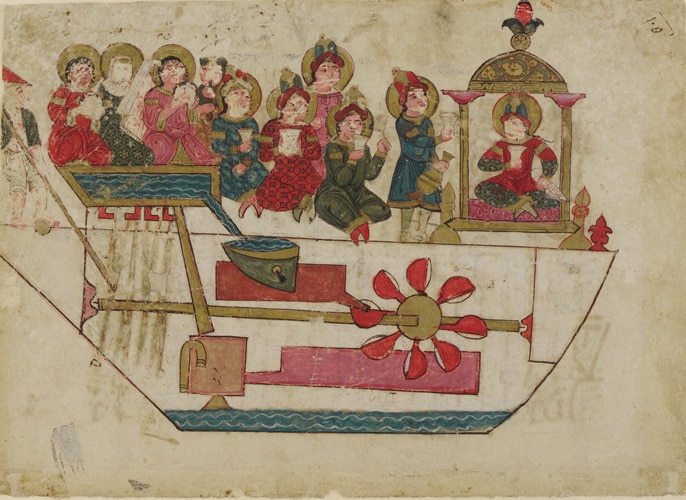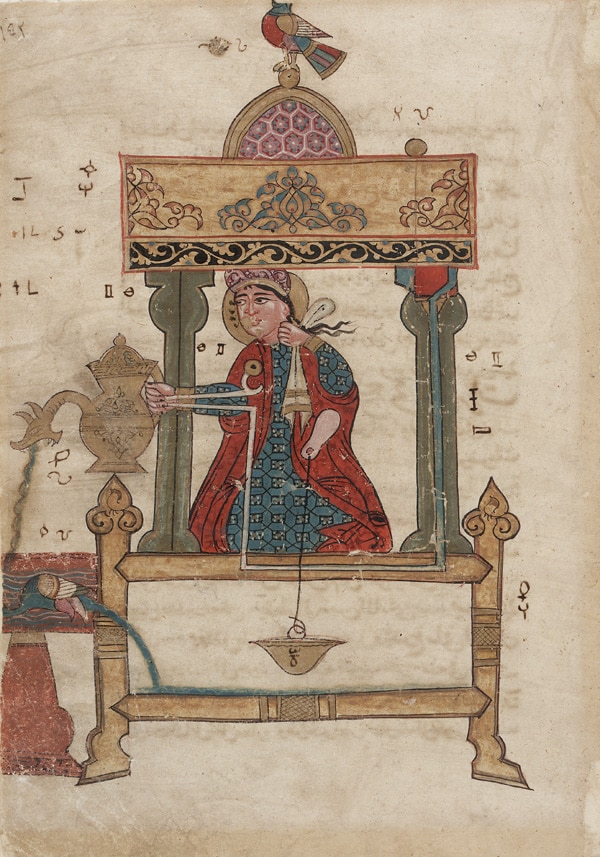“Ismail Ebul-Iz Bin Razzaz Al-Cezeri”, known as Cazari (Gazari) in the western world, was born in 1153 in the Tor (Dağ Kapı) neighborhood of Mesopotamia (Cizre). His name is Ismail and his father’s name is Rezzaz. He was nicknamed Ebul-iz, meaning father of honor and honor.
Al-Jazari is proof that he is from Cizre. Al-Jazari, who became world-renowned for his unique inventions, was called “Bediuzzaman”, meaning “the wonder of time”. The great inventor from Cizre is the scientist, scientific and technical person who laid the foundation of the computer, 60 machine inventors such as robots, clocks, water machines, combination locks, combination safes, thermos, automatic children’s toys, and the world’s first cybernetic scientist.
He lived most of his life away from his hometown, in the city of Diyarbakır, in Upper Mesopotamia, which is located in the south of our country today. He worked in the service of three Artuqid rulers in a row. These are Nureddin Muhammad ibn Arslan (1174–1185), Kutbuddin Sukman ibn Muhammad (1185–1200), and Nasiruddin Mahmud ibn Muhammad (1200–1222).
In order to better understand who Ebu’l-İzz al-Jazari is, let’s describe him in today’s terms:
“The greatest scientist of the Middle Ages, physicist master of mechatronics, cybernetics and hydraulics, the genius who inspired today’s robotic technology, the engineer who designed the first robots in history using the balance-space-air elements, the owner of the oldest known records about robotics, A source of inspiration for scientists from various nationalities, including Leonardo da Vinci.”
Al-Jazari and His Works
The only information known about his life is the information he gave in his book. He finished writing his book in early 1206, and it took 7 years to complete. The name of the work is El Câmi-u’l Beyn’el İlmî El-Amelî’en Nafi fî Sına’ati’l Hyel “Useful Information and Applications in Machinery Construction”. We understand from his notes that he had more than 25 years of experience in machine building when he started to write his book. Therefore, historians conclude that he started his active life around 1175.
Many aspects of his life have made him different. First, he was interested in machine building, unlike most scientists of that period of Islamic civilization. Indeed, most of the scientists of that time were multidisciplinary in the sense understood today. Some of the most famous scholars such as Al-Farabi, İbni-Sina (Avicenna), Al-Hawarizmi excelled in many disciplines, from poetry to theology, from philosophy to science and medicine. However, Al-Jazari was a true mechanical engineer and excelled at his job as chief engineer at the court of the Artuqid rulers.
Useful Information and Applications in Machine Building
The first attempt to translate the book “Useful Information and Practices in Machine Building” was made by Wiedmann and Hawser, who translated parts of it into German in the first quarter of the twentieth century. However, the best-known translation of this book belongs to Hill. It was published in English with the title “ The Book of Knowledge of Ingenious Mechanical Devices ”. Different translators preferred to translate the book as “A Compendium on the Theory and Practice of the Mechanical Arts”. Some sources refer to the same book simply as “Automata”.
All these attempts were made to capture the meaning of the original title of the work in these long and different titles. If we examine the keywords of the title, we can find the word “ilm”, which means science or knowledge in the broadest sense. “amal ennafii” can be translated as useful work or power, but from the meaning of the whole title, it is probably intended for the practical aspect of execution or design or simply engineering. Here, “hiyal,” the plural of “hyla,” means a work or a difficult way of doing something. Al-Jazari tried to design the machines he called by bringing science and practice together.
Devices It Works On
It is a book in which more than 50 devices are shown with drawings, the principles of use and the possibilities of use. Al-Jazari says that every technical science that is not put into practice will fall between right and wrong. Al-Jazari’s book is divided into six genres.
Of all the machines presented, two are the most notable. The famous elephant clock, which was by far the most advanced clock at the time, and the inventions of a water pump using a crank-shifter-like system.
Although only a few of his inventions can be classified as utilitarian machines, when Al-Jazari presented these inventions, he succeeded in distinguishing himself from those who were researching the same things.
Although he lived in his ruler’s palace, he also listened to the needs of the people. The fifth chapter of his book presents five different, useful inventions mainly for raising water for irrigation and domestic purposes. Most of the scientists (Ulama) are at the service of the caliphs. Their interests are mostly directed towards responding to the needs of these managers. This attitude, in which Al-Jazari produced something for the people, was unusual at that time.
He also tried to use plain Arabic while writing his book and to explain as best he could how his machines worked. He even gave precise information on how to create different structures.
This type of writing favored by Al-Jazari at the time was unusual in form, as most scholars (Ulama) were more interested in impressing their peers with their books using a sophisticated language that was hardly understood by the common people and thus limited to the elite.
The remainder of his book presents another type of engineering different from the utilitarian technology described in chapter five. This type of technology is often referred to as “thin technology”. Because its distinctive features are due to the use of precise mechanisms and controls. Some of these devices had obvious practical uses. Al-Jazari used water clocks for astronomical observations. Apart from this, his works were erected in public places.
He led him to invent the first programmable humanoid robot in 1206. Al-Jazari’s robot was built to entertain guests at the monarch’s drinking parties. The robot was a boat with four automatic musicians floating on a lake.
Where His Works Are Found
Another work of Al-Jazari is the famous sundial of Diyarbakir Great Mosque.
Many copies of this important work called “Useful Information and Applications in Machine Building” are found in different places. They are preserved in Topkapi Palace in Istanbul and in many museums around the world, such as the Boston Museum of Fine Arts, the Louvre Museum in France, and the Oxford Bodleian Library.
About Al-Jazari’s book, Sarton says, “This work is the most elaborate of its kind in this field. The work can be considered the pinnacle of the Muslim line of success.”
Many of the ideas used in making ingenious devices were useful in later developments of mechanical technology. It has had a tremendous impact on the history of the mechanical design of machines. His utilitarian inventions were also used throughout the Arab world at that time and spread as far as Spain.


















